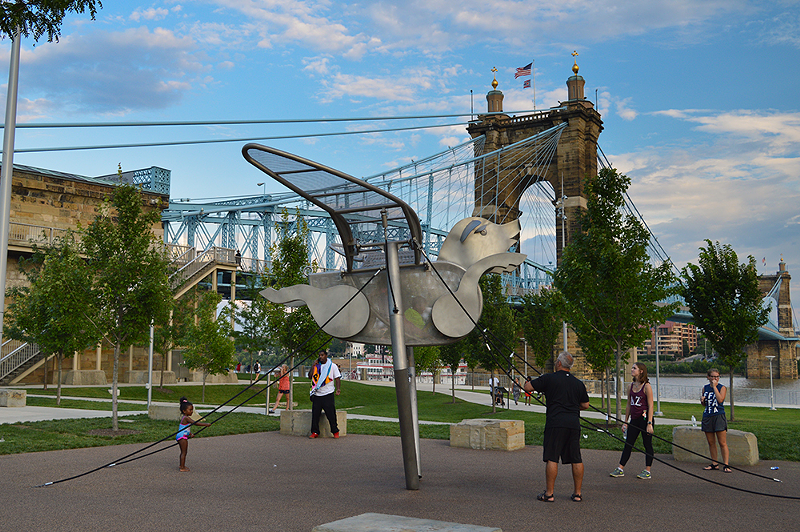During the pandemic, parks and other public outdoor spaces became a refuge as folks looked to escape the confines of their homes while still maintaining social distance.
Luckily, we live in a city with some of the best parks in the nation, according to the Trust for Public Land's Annual ParkScore Index Report.
This year, Cincinnati ranked No. 8 in the nation, dropping three spots from our No. 5 title in 2020. Washington, D.C. took home the No. 1 spot.
The ParkScore Index Report looks at the 100 largest cities in America and rates them on five factors:
- Park equity, which evaluates park access for neighborhoods of color versus white neighborhoods and low-income neighborhoods versus high-income neighborhoods, as well as proximity to parks;
- Park access, which measures the percentage of residents living within a 10-minutes walk of a park;
- Park acreage, which is based on a city’s median park size and the percentage of city area dedicated to parks;
- Park investment, which measures park spending per resident;
- And park amenities, which counts the availability of six popular park features including basketball hoops, off-leash dog parks, playgrounds, “splash pads” and other water play structures, recreation and senior centers and restrooms.
According to the survey, Cincinnati has 351 parks with 16% of city land being used for parks and recreation.
"Eighty-seven percent of Cincinnati residents live within a 10-minute walk of a park, far exceeding the national ParkScore average of 75%," reads the report. "Cincinnati also outperformed on park spending, investing $172 per resident compared to the national ParkScore average of $96."
This is the first year that the ParkScore Index has examined park equity, and their results revealed "significant disparities," with white and higher-income neighborhoods having a disproportionately high amount of park space.
"Across all ParkScore cities in the United States, residents in neighborhoods where most people identify as Black, Hispanic and Latinx, Indigenous and Native American, or Asian American and Pacific Islander have access to 44% less park space per capita than residents in neighborhoods that are predominantly white. Residents in low-income neighborhoods have access to 42% less park space than residents in high-income neighborhoods," reads the report.
How does Cincinnati fare?
"In Cincinnati, residents in neighborhoods where most people identify as people of color have access to 7% less park space than residents in neighborhoods that are predominantly white," the Trust for Public Land says. "Residents in low-income neighborhoods have access to 24% less park space than residents in high-income neighborhoods. "
See Cincinnati's full results at the Trust for Public Land's website.


